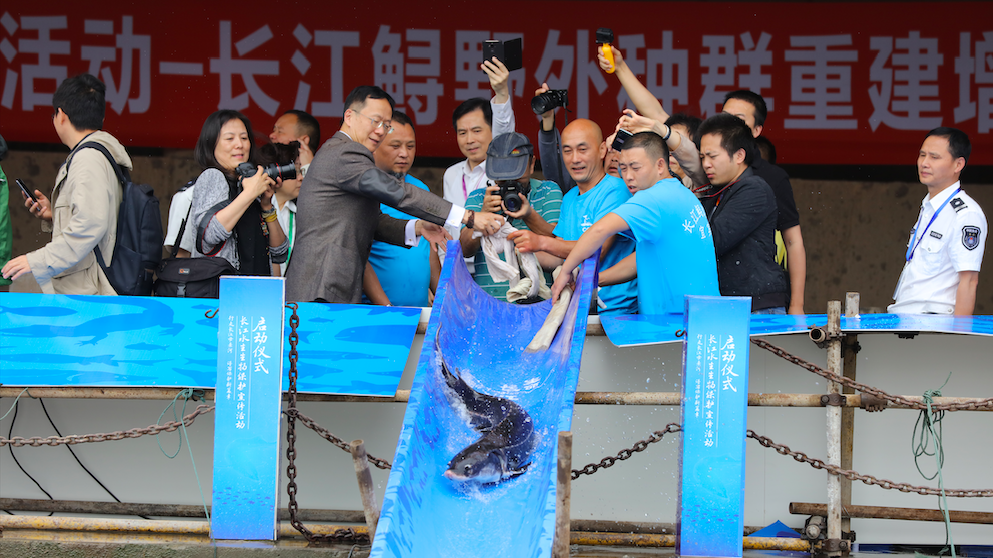Chinese Paddlefish Officially Declared Extinct
©Ryan Hagerty/U.S. Fish and Wildlife Service
A July 21 report by the International Union for Conservation of Nature’s Species Survival Commission (IUCN SSC) confirmed that the Chinese paddlefish, last sighted in the wild in 2003, had died out. The report, a comprehensive investigation of the state of world’s sturgeon and paddlefish populations, also indicates that The Yangtze sturgeon has moved from critically endangered to extinct in the wild.
©UGIF Sturgeon IUCN Red List status
The Chinese paddlefish, one of the largest freshwater fish species in the world and can grow up to 23 feet long and is native to the Yangtze River, is an ancient fish thought to have existed since the post-Jurassic period, some 200 million years ago. It was listed as China's first-class national protected animal in 1989, and was first declared "critically endangered" by the IUCN in 1996. There has been no photographic evidence of this species since 2009. The last time it was seen alive was in 2003.
©Wei QiWei(left)
©Ping Zhuang(right)
According to the report, there are three main reasons for the extinction of the sturgeon: the sturgeon has been overfished for its meat and caviar for centuries, and despite the protection of international law, poaching still affects these five schools in large numbers; the construction of dam also affects all sturgeon species that migrate to their breeding grounds; river warming due to climate change further disrupts sturgeon breeding. Restoring freshwater ecosystems and building efficient fish passages, as well as restocking, are key measures to support the long-term survival of the world's sturgeon.
©WWF
©Xinhua News Agency
"The extinction of the Chinese paddlefish and the Yangtze sturgeon in the wild has woken us up," said Zhou Fei, Deputy Director General of WWF Beijing Representative Office. “The results of this Red List update remind us that rescue protection is needed to reverse the trend of freshwater biodiversity loss, and it is even more necessary to plan and implement systematic protection measures to address long-term threats. Manual measures and single sector investment are far from enough. We need more participation,more support of institutions and social forces to better protect the Chinese sturgeon migrating in the river and sea, and create a bright future for the river and sea ecosystem."






